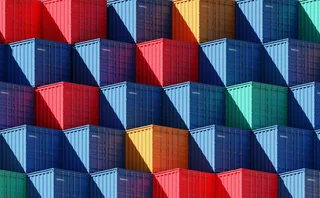
Best commodity research, Asia: Refinitiv
Energy Risk Asia awards, 2018: Shining a light into China’s opaque oil imports provides clients with valuable insight

Estimating China’s weekly and monthly crude oil imports has always been challenging, but in recent years it has become even harder due to the increasing complexity of the import market. Yet, as the world’s largest crude importer, China influences world oil prices and this makes accurate information on its imports highly prized.
Seeing this, Refinitiv – formerly the financial and risk business at Thomson Reuters – set out to provide its clients with weekly and monthly data on China’s imports. “Real-time, current-month forecasts are what an opaque industry needs,” says Yan Chong Yaw, director, oil research at forecasts, Refinitiv.
A record 37–39 million metric tons (mt) of oil now flows into 30 to 40 ports in China each month, making tracking it exceedingly challenging, says Yaw. “Since 2016, imports have grown by 10 million mt per month – that’s an awful a lot more vessels and ports.”
However, official statistics have become scarcer. In March this year, China stopped publishing import volumes by exporting countries and now only publishes the total figure. “It’s become a lot less transparent,” Yaw adds.
The main reason behind China’s increased oil imports is the creation of its Strategic Petroleum Reserve in 2014. Yaw describes China’s SPR – which it aims to build to 616 million barrels (82.13 million mt), or 90 days of supply – as a “game-changer” for the country’s imports. “This is a huge amount,” he says. “It would move markets if they filled it at only 1% per year, so we started scrutinising it. One must be conversant with the shifting landscape of China’s refining and storage infrastructure. We know where the strategic tanks are and which ports serve them.”
Refinitiv started publishing flows into the SPR in 2015. The authorities only twice released data on SPR levels, most recently in June 2017, when it was put at 37.73 million mt. Refinitiv’s forecast at that time was 38.58 million mt. “There was a variance of 3%. That was when we knew how accurate we were,” says Yaw.
One must be conversant with the shifting landscape of China’s refining and storage infrastructure. We know where the strategic tanks are and which ports serve them
Yan Chong Yaw, Refinitiv
Refinitiv estimates the SPR is now 48–49% full, containing 40.14 million mt, and that nothing has been added since March when crude prices rose above $70 per barrel. “They probably made a market call,” says Yaw. “They are not in a hurry and didn’t provide a timeframe.”
The other reason for China’s increase in imports has been the rise of the independent refineries, which were granted import licences for the first time in 2015. Prior to that these so-called teapot refineries could only buy excess crude from one of the four licensed state-owned oil companies or use alternative feedstocks, such as fuel oil. “This created a boom in imports so we started tracking these flows with the same scrutiny,” says Yaw.
Volumes grew from less than two million mt per month in 2015 to more than six million mt today, accounting for about 15% of total imports, with the oil going to between 40 and 50 teapots, says Yaw.
Refinitiv’s ongoing scrutiny has picked up crucial trends. “Teapot buying has slowed down recently. [This is a] new, potentially alarming trend. They overproduced and are not in a good place,” says Yaw.
Refinitiv’s China crude import estimates are part of its wider Asia coverage in which it produces import data of every major importing country. Estimates are weekly and monthly, with updates feeding directly into the Refinitiv Eikon screen and email alerts.
To produce the estimates, Refinitiv tracks tankers into China and other Asian countries using the satellite global mapping technology of Genscape’s Vesseltracker. This provides information such as the vessel’s name, size, origin, destination and expected arrival and is used to identify around 60–70% of vessels that carry crude, says Yaw. “It provides a basic layer of information and we overlay the cargo-level information, which is what we produce on our platform.”
Refinitiv then inputs shipping broker and agent reports and other data. The map is also programmed with rules to determine whether a vessel is carrying crude. Yaw says it then becomes a manual process. “My analysts interact with traders to identify whether the remaining vessels are carrying crude and provide a layer of verification.”
There are many complications. A port may be close to a both a strategic site and a refinery. Oil also arrives via international pipelines, although Refinitiv assumes they are operating at capacity unless there are outages. Additionally, there are storage tanks that hold unrefined crude for re-export and those that hold oil that has been taxed and will head inland. “It’s one of the major challenges, for which we need contacts at ground level,” he adds.
Thomson Reuters’ financial and risk business re-branded as Refinitiv on October 1, following the purchase of 55% of the business by private equity funds managed by Blackstone.
Only users who have a paid subscription or are part of a corporate subscription are able to print or copy content.
To access these options, along with all other subscription benefits, please contact info@risk.net or view our subscription options here: http://subscriptions.risk.net/subscribe
You are currently unable to print this content. Please contact info@risk.net to find out more.
You are currently unable to copy this content. Please contact info@risk.net to find out more.
Copyright Infopro Digital Limited. All rights reserved.
As outlined in our terms and conditions, https://www.infopro-digital.com/terms-and-conditions/subscriptions/ (point 2.4), printing is limited to a single copy.
If you would like to purchase additional rights please email info@risk.net
Copyright Infopro Digital Limited. All rights reserved.
You may share this content using our article tools. As outlined in our terms and conditions, https://www.infopro-digital.com/terms-and-conditions/subscriptions/ (clause 2.4), an Authorised User may only make one copy of the materials for their own personal use. You must also comply with the restrictions in clause 2.5.
If you would like to purchase additional rights please email info@risk.net
More on Commodities
Energy Risk Asia Awards 2024: The winners
Winning firms adapt to change with exemplary risk management skills
Foreign funds are bulls in China’s onshore commodity futures
Growing participation from overseas investors is boosting liquidity in what’s already a boom market
Energy Risk Software Rankings 2024: IT demands increase amid rising risk
Heightened geopolitical and credit risk increase requirements on commodities software
Energy Risk Asia Awards 2023: The winners
Winning firms demonstrate resilience and robust risk management amid testing times
ION Commodities: addressing the market’s recent pain points
Energy Risk Software Rankings winner’s interview: ION Commodities
Energy Risk Commodity Rankings 2023: adapting to new market dynamics
Winners of the 2023 Commodity Rankings provided reliability when clients faced extreme change
Energy Risk Software Rankings 2023: managing uncertainty
Unpredictable markets make CTRM software choices key
Navigating the volatility and complexity of commodity markets
Commodity markets have experienced significant challenges since the Covid-19 pandemic, the conflict in Ukraine and the subsequent sanctions imposed on Russia. These unprecedented events have caused fluctuations in supply and demand, disrupted global…








